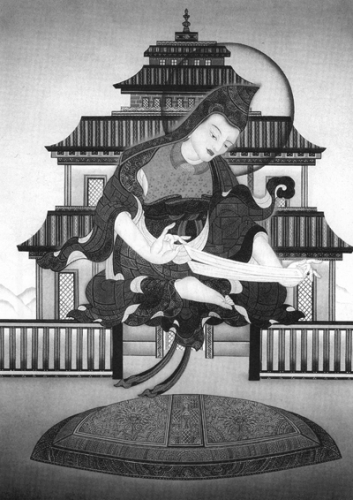
What we call the body is not feet or shins,
The body, likewise, is not thighs or loins.
It’s not the belly nor indeed the back,
And from the chest and arms the body is not formed.
The body is not ribs or hands,
Armpits, shoulders, bowels, or entrails;
It is not the head or throat:
From none of these is “body” constituted.
If “body,” step by step,
Pervades and spreads itself throughout its members,
Its parts indeed are present in the parts,
But where does the “body,” in itself, abide!
If “body,” single and entire,
Is present in the hand and other members,
However many parts there are, the hand and all the rest,
You’ll find an equal quantity of “bodies.”
If “body” is not outside or within its parts,
How is it, then, residing in its members?
And since it has no basis other than its parts,
How can it be said to be at all?
Thus there is no “body” in the limbs,
But from illusion does the idea spring,
To be affixed to a specific shape—
Just as when a scarecrow is mistaken for a man.
As long as the conditions are assembled,
A body will appear and seem to be a man.
As long as all the parts are likewise present,
It’s there that we will see a body.
Likewise, since it is a group of fingers,
The hand itself is not a single entity.
And so it is with fingers, made of joints—
And joints themselves consist of many parts.
These parts themselves will break down into atoms,
And atoms will divide according to direction.
These fragments, too, will also fall to nothing.
Thus atoms are like empty space—
they have no real existence.
All form, therefore, is like a dream,
And who will be attached to it, who thus investigates!
The body, in this way, has no existence;
What is male, therefore, and what is female!
From The Way of the Bodhisattva by Shantideva, © 1997 by the Padmakara Translation Group. Reprinted with permission of Shambhala Publications, www.shambhala.com
Thank you for subscribing to Tricycle! As a nonprofit, we depend on readers like you to keep Buddhist teachings and practices widely available.